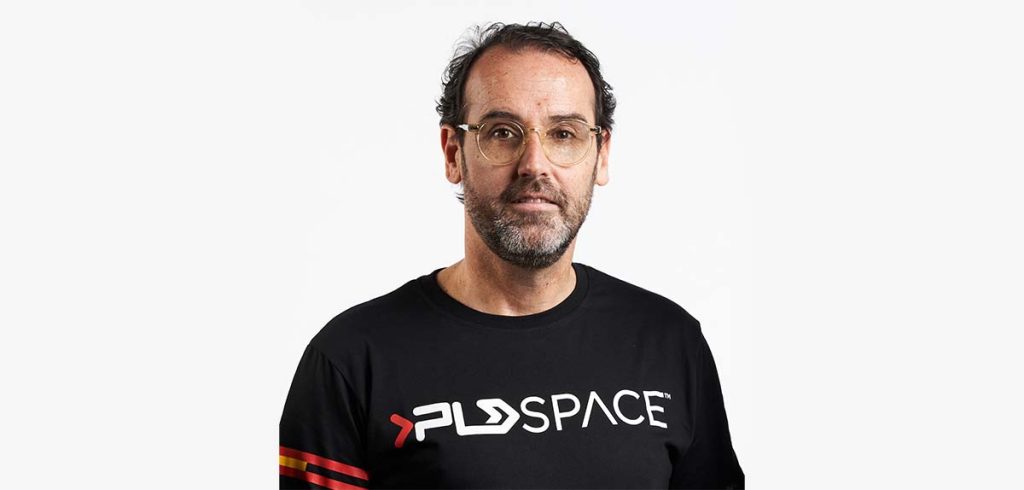In Spain we have first-rate talent, world-class academic and research institutions, and a solid industry with a great ability to compete at an international level”
Space Transportation is undergoing a
metamorphosis process. The demand for launch services is growing exponentially across the globe and, still, Europe is far from being capable of satisfying it. For the first time
in over 40 years we are facing a possible scenario where Europe has zero capacity to access space. These are not good news for anyone. This uncertain future requires stern
decisions and demands change in the system that has dominated this side of the pond from its very inception.
During last November’s Space Summit, the first few
agreements were signed that put on paper that ‘intent’ to
start traversing the path towards a model where the United
States is more than a decade ahead of us. In addition to
signing ‘major agreements’ to ensure the immediate
European ability of accessing space, we are at a turning
point in regard to the role of international agency funding
and the growing capabilities of national agencies, with
wide-ranging programs.
It has been made clear that the use of resources when it
comes to launch vehicles has not been based on criteria
focused on competitiveness. This structure, which worked
in the past, collides with the dynamism of a vast majority of
new companies of the sector which, despite having been
forced to seek funding outside the traditional structure,
have been able to react to the unforeseen circumstances
that are inherent to an ever-changing industry and move
at a speed that they would never have been able to attain
from within the system itself.
The truth is that this problem offers us the perfect excuse
and Seville was the setting that was chosen to overhaul
the modulus operandi of traditional European space
transportation. The European Space Agency (ESA) publicly
demonstrated its trust in small launch vehicle companies
as essential players in the streamlining of a model that is
not serving the needs of the clients. Taking into account
new sector stakeholders as a way to complement ESA’s
offering with a different type of launch vehicle is something
that we must value. And in this new context, Spain will find
an opportunity.
PLD Space will be competing in the European challenge
with a launch vehicle entirely designed, developed and
manufactured in our country. The successful test flight of
our demonstrator, MIURA 1, makes it clear that we have
the ability to do it and, more remarkably, that we can do so
while staying within the costs demanded by the market.
But if we want Spain to play a leading role rather than
being merely a spectator in this paradigm, implementing
the current national strategy for space is paramount. There
is no doubt that space will transform the way in which the
value chains of all industries operate, with an impact on
par with the advent of internet in the 90s. The creation
and implementation of the Spanish
Space Agency implies a significant
milestone, but now we need a
roadmap as a country that enables
Spain to take part of this exclusive
world order.
We already have the
most important element: a first
technology that has proven its ability
to provide that much-sought access
to space; we have the capability of
sitting down at the table of the great
world powers and sell our system.
We cannot let this opportunity slip
past us. The time to start over is now.
In Spain we are lucky enough to
count with other highly competitive
pillars that can support this space
strategy and, together, lead it to
success. We have first rate talent,
world-class academic and research
institutions, and a solid industry
with a great ability to compete at
an international level. Once this
entire ecosystem works hand-inhand
and counts with the support
of institutions and administrations, it
will be able to achieve success in a
sector as complex as space.
This transmutation process is
intrinsic to PLD Space. During our 12
years of existence we have learned
to adapt, pivot, try and fail, and keep
trying. The launch of MIURA 1 has
helped us obtain highly valuable
feedback to be applied to the model
of our new orbital rocket MIURA
5.
Now, our challenge consists of
building and establishing a supply
chain that enables us to advance in
the creation of a space launch vehicle
production industry. An endeavor
that relies on vertical integration and
will lead us to develop certain parts
down to a component level, which
we would outsource in the past. Only
this way will we be able to guarantee
an autonomous launch capability
that is not reliant on third parties. It
is the time to start over for all of us.





